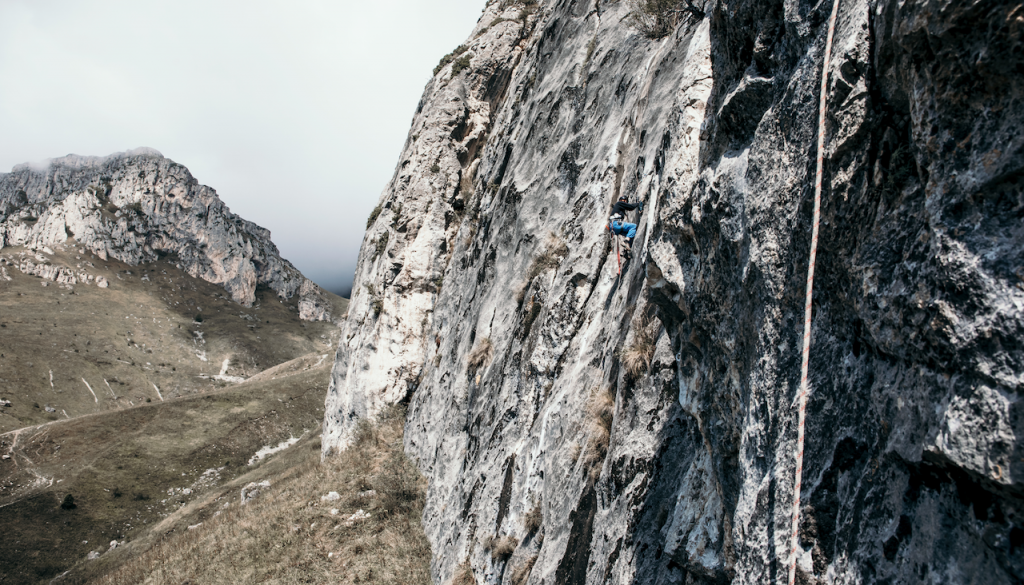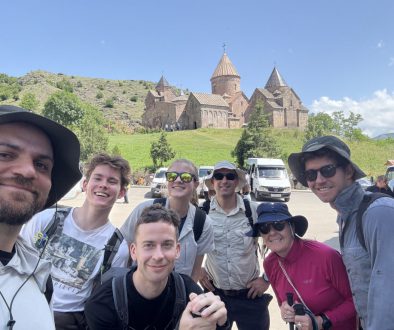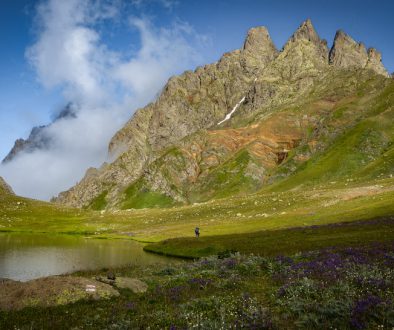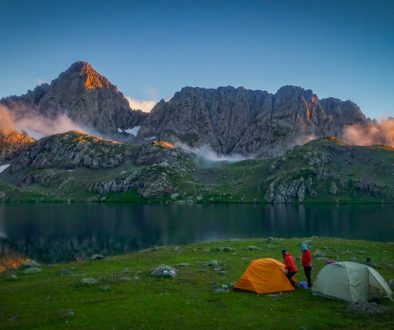How One British Hiker Pioneered The First Rock Climbing Routes In An Armenian National Park
This is a guest post by Val Ismaili, who in 2017 completed an 800km thru-hike of Armenia and returned in 2019 with another ambitious goal: to establish brand new rock-climbing routes among the stunning cliffs of Dilijan National Park.
In 2017, I travelled to the Caucasus for the first time. It was a four-month-long trip on which I completed the first thru-hike of the Transcaucasian Trail (TCT) and spent the remaining time scouting, designing and building the first new trails in Armenia.
A year prior, I knew nothing about the region – I couldn’t even point to Armenia on a map. Yet somehow, I found myself in the most diverse landscape I’ve ever seen, drinking awful amounts of oghi (homemade vodka) as I followed the routes of this guy called Tom who had spent a few years scouting about 70% of the TCT route.
I fell in love with the region! The combination of the beauty of the landscapes, the hospitality of local people, and the idea of helping to create a new long-distance route captured me entirely.
One of those beautiful landscapes was the cliffs of Dilijan. Located at 2000m, the limestone cliffs extend for almost 20 kilometres ranging from 30-400m in height, towering over the landscape as the most prominent features in the region. I spent a lot of time that summer scouting trails in the area and staring up at those cliffs, wondering how one would attempt to climb a new route.
The idea stuck with me for the next year, and I showed photos of the cliffs to friends back in Bristol in the UK. Most people appreciated the beauty and scale of the cliffs but weren’t that interested to go and try to develop new routes, except Peter who eventually latched on to that very idea. We put together a team that spanned five countries and three continents, and for a year went about tirelessly collecting funding.
Over August and September 2019, that work came together and we spent five weeks establishing 23 new climbing routes on the cliffs of Dilijan. The cliffs have a huge amount of potential for new routing, from enormous, smooth, techy slabs to big multi-pitch trad.
I’ve spent a lot of time building hiking trails and though it’s physically challenging work, it’s a satisfying process seeing the trail lengthen each day, and eventually being able to enjoy the route yourself and remember the memories of lavash and cheese, the “Dilijan Swingers Club”, and all those tree roots that just wouldn’t budge.
New routing in climbing is a lot like that. You walk along the bottom of a crag searching for a line that clicks with you. Looks cool? Abseil onto it and check the rock quality. All good? Get cleaning! Sometimes you’re lucky and the line is naturally clean, other times you commit a few days to scrub dirt from cracks, remove loose rock and get rid of those damn juniper bushes. Most of the work lies there. If you need to put bolts in, the process is relatively quick. Otherwise, you can climb on removable protection.
The process of envisioning a line that could be possible to climb, equipping it, and then pouring in your effort to attempting the route, is incredibly fulfilling. In a similar way to building a trail and then walking on it with friends. The act of climbing though is naturally a higher intensity, you go through the ups and downs on attempts to climb a route wondering if you’re strong enough or if you’re actually just giving up too easy, and eventually (hopefully) you get the final pay-off. That feeling doubles up when you watch someone have those same ups and downs on a route that you created.
Since returning home, we’ve worked on putting together a short (free) guidebook so others can enjoy the routes. The guidebook is also meant as a demonstration of the potential of these cliffs. We tapped into maybe 200m width of maybe 20 kilometres of cliffs. So if you happen to be heading to Dilijan and want to check out some new climbing routes, have a look at the guidebook here.
Big thanks to Val for the guest post – and for his amazing efforts over the last three years to help make the Transcaucasian Trail a reality! To learn more about the new climbing routes, visit the “Project Armenia” website at https://www.projectarmenia.co.uk/. Photographs courtesy of Aleksandra Wierzbowska, Janek Kedzia and Graham McGrenere.













